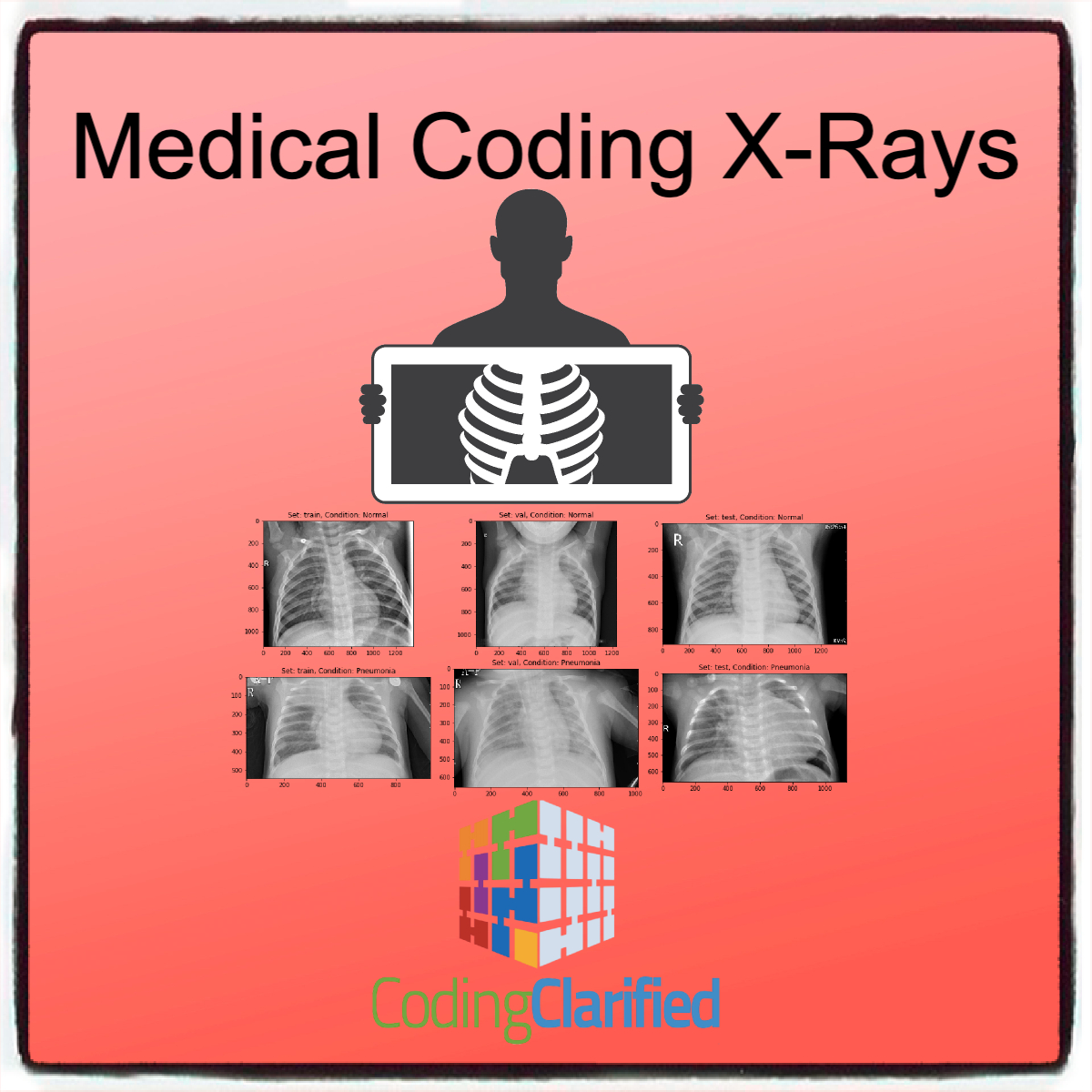Medical Coding Guidelines & Tips for Coding and Billing X-Rays
Radiology services, particularly X-rays, are commonly performed procedures in both outpatient and inpatient settings. Accurate medical coding of X-ray services are crucial to ensure compliance, avoid denials, and receive proper reimbursement. This guide provides an overview of the CPT/HCPCS codes, documentation requirements, modifiers, and best practices for X-ray billing.
Understanding X-Ray CPT Codes
X-rays fall under the 70000 series of the CPT (Current Procedural Terminology) code set. The code used depends on the body part imaged, the number of views taken, and whether contrast is involved (though contrast is more relevant in advanced imaging like CT or MRI).
Common Examples:
| Body Area | CPT Code(s) | Description |
|---|---|---|
| Chest (2 views) | 71046 | Radiologic exam, chest; 2 views |
| Abdomen (1 view) | 74018 | Abdomen X-ray, single view |
| Ankle (3 views) | 73610 | Ankle X-ray, complete, 3+ views |
| Spine (AP & Lat) | 72100 | Spine, lumbar, 2 viewsTip: Make sure to count the number of views carefully to choose the correct code. |
Key Documentation Elements
To ensure accurate billing and reduce the risk of denials, the following documentation must be included:
-
Medical necessity: Must be clearly indicated in the provider’s note (e.g., trauma, pain, injury).
-
Body part and laterality: Include specific site and whether it’s left/right.
-
Number of views: Justifies the use of the specific CPT code.
-
Radiology report: Must include interpretation by a licensed radiologist or physician.Note: Just performing the X-ray isn’t enough—you need a documented interpretation to bill globally.
Global vs. Technical vs. Professional Components
Each radiology CPT code includes three billing options:
-
Global service: Code billed when both the technical and professional components are provided.
-
Technical component: Refers to the performance of the imaging only (e.g., taking the X-ray).
-
Professional component: Refers to interpretation and report only.
Use of Modifiers:
-
Modifier -26: Professional component only
-
Modifier -TC: Technical component onlyExample: A clinic takes an X-ray and sends the image to an external radiologist. The clinic bills 73610-TC, and the radiologist bills 73610-26.
Payer-Specific Rules & Medicare Guidelines
Different payers may have specific documentation or authorization requirements. Here are a few key points:
-
Medicare typically requires strict documentation of medical necessity.
-
Some Medicare Administrative Contractors (MACs) issue local coverage determinations (LCDs) that specify when an X-ray is reimbursable.
-
Preauthorization might be required for advanced imaging, but rarely for basic X-rays unless bundled or part of a broader service.Always check payer-specific policies, especially for Medicaid and Medicare Advantage plans.
Bundling and NCCI Edits
Some X-rays may be bundled with other services (e.g., in the ED or post-op care) under National Correct Coding Initiative (NCCI) edits.
-
Review NCCI tables to avoid billing for X-rays that are considered incidental to other procedures.
-
Modifier -59 may be necessary to unbundle services in appropriate circumstances.
Common Coding Pitfalls to Avoid
-
Billing without documentation of interpretation
-
Selecting the wrong code based on number of views
-
Forgetting to use modifiers for component billing
-
Duplicate billing of global and professional/technical components
-
Lack of medical necessity in provider documentation
Best Practices for X-Ray Billing
-
Develop checklists to ensure views and documentation match the CPT code used
-
Train staff on common radiology codes
-
Use coding software or audits to catch errors
-
Coordinate with radiologists to ensure timely and complete interpretation reports
-
Conduct regular compliance reviews
Correctly coding and billing X-rays ensures compliance, maximizes reimbursement, and improves workflow efficiency. By focusing on documentation, selecting appropriate CPT codes, and understanding component billing, healthcare providers can avoid denials and audits.
Coding Clarified Blog Radiology https://codingclarified.com/medical-coding-radiology/

